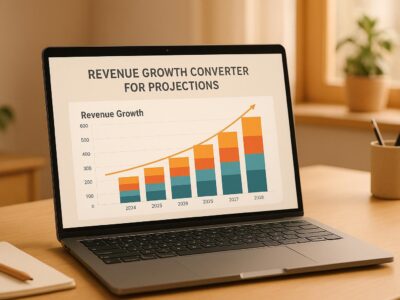In today’s digital world, Google Tag Manager (GTM) is key for marketers. It makes managing and implementing tags simpler. To fully use GTM, companies need to improve GTM efficiency with specific workflow tools. These tools help optimize Google Tag Manager and let teams work better together. This piece will explore tools that enhance GTM’s performance and increase work productivity. By using these tools, marketers can improve how they manage tags and get better results from their campaigns.
Key Takeaways
- GTM simplifies tag management for digital marketers.
- Workflow efficiency tools enhance GTM’s performance.
- Optimizing processes can lead to significant productivity gains.
- Specialized tools are essential for effective tag management.
- Teams must embrace automation for better efficiency.
- Regular assessment of tools can improve ROI.
Understanding GTM Workflow Efficiency
GTM workflow efficiency is all about managing tags, triggers, and variables on Google Tag Manager efficiently. This knowledge helps companies use GTM well, boosting their marketing. It makes their marketing efforts more effective.
Definition of GTM Workflow Efficiency
GTM’s workflow efficiency tools make handling tags and other elements smooth. This smoothness is vital for quick tag deployments, right data collection, and better tracking. By blending these into your work, operations get easier, and you can constantly improve your digital marketing management.
Importance of Workflow Efficiency in GTM
Understanding GTM’s workflow efficiency is crucial for marketing teams. If the buying process is hard, people might not buy. Making tagging workflows better can ease these issues, improving customer experience. The difficulty of making deals today needs strong systems to avoid technology overload. Using the right tools well increases productivity, allowing teams to be their best. To dive deeper into GTM challenges, check out this resource.
| Factors | Impact of Inefficiencies | Benefits of GTM Efficiency |
|---|---|---|
| Buyer Friction | 43% less likely to purchase | Improve customer satisfaction |
| Seller Productivity | Flattening due to hesitation | Enhanced team effectiveness |
| Scrutinized Deals | Heightened response to offerings | Faster deal closures |
Key Challenges in GTM Workflow Management
Managing GTM workflows is tough for teams. It can slow down their work and make it less effective. Recognizing these issues is key to doing better and reaching goals.
Common Obstacles for Teams
Many teams struggle with communication problems. This makes it hard for them to work together. Projects may get delayed, and it takes longer to finish tasks.
Also, it’s hard when different tools don’t work well together. This can lead to mistakes and confusion. Not having enough resources, like training on GTM tools, makes this worse. All of these make it hard to manage tasks well.
Impact of Inefficiencies on Performance
Inefficiencies in GTM workflows can really hurt how well a team does. For instance, not being quick enough or having wrong data can lower lead conversion rates. Companies that want to do well in marketing need to know this. It can make their operations more costly and lower their marketing success.
It’s very important to make GTM processes better. This helps to reduce bad effects and make the workflow more productive.

Benefits of Using Workflow Efficiency Tools
Adding workflow efficiency tools to GTM practices offers many benefits for teams aiming for top performance. These tools improve key areas like teamwork, talking to each other, keeping track of projects, and sharing reports. With these productivity tools, companies can organize tasks better and boost overall work speed, helping them achieve their GTM goals.
Enhanced Collaboration and Communication
Workflow efficiency tools make it easier for team members to talk and work together in real-time. This leads to open sharing of details, cutting down mistakes caused by misunderstandings. Everyone can see project updates anytime, making sure all stay in the loop during the tag management journey.
Improved Project Tracking and Reporting
Good project tracking is key to see how well tag management plans are working. By using these tools, teams get better at making reports, which helps them draw useful conclusions from data over time. Having up-to-date info lets teams tweak their methods wisely, boosting their GTM efforts.
Top GTM Workflow Efficiency Tools
To improve your GTM strategy, it’s key to use certain tools for better workflow. Choosing the right GTM automation software helps make your processes smoother and boosts productivity. Here are three top tools that can make your GTM work better.
Tool 1: Asana – Streamlining Task Management
Asana makes handling tasks easier by allowing teams to assign jobs, set deadlines, and track progress. This tool keeps projects organized, making sure every task gets attention. Its collaboration features let teams work together smoothly and tackle any issues quickly.
Tool 2: Trello – Visualizing Workflow
Trello’s visual boards, lists, and cards help teams understand their projects and workflows better. This clear overview leads to quick changes, smoother project management, and successful GTM efforts.
Tool 3: Monday.com – Customizable Solutions
Monday.com is great for its flexibility, letting teams tweak it to suit their workflows. This adaptability is perfect for all kinds of projects, making task management more personal. Using this tool can really take your GTM strategy to the next level.
Using these tools can help integrate your GTM software effortlessly. For more tips on improving workflow, check out this resource.
Integrating Tools into Your Existing GTM Strategy
Integrating tools into GTM strategies must be done with care and thought. It’s important to look at how things are currently done. This helps identify what works well and what doesn’t. Once you understand your workflow, you can pick the right GTM automation tools. These tools should help meet your business aims.
Assessing Current Workflows
Looking closely at current workflows is key for improving GTM. Teams need to understand who does what and with which tools. Spotting issues or unnecessary steps can show where to make things better. By doing a thorough assessment of workflows, it’s easier to choose tools that truly meet your needs.
Selecting the Right Tools for Your Team
Selecting the right tools is about more than just popularity. It’s important to choose those that help teams work together better, manage projects more easily, and improve workflow. Your chosen GTM automation software must fit with how you already work and be flexible for future changes. The best solutions will boost productivity and strengthen your marketing work.
Best Practices for Maximizing Tool Effectiveness
To get the most out of GTM productivity tools, it’s key to focus on team training and onboarding. Teams are trained intensively to skillfully use these tools. This fosters a culture that values working together and being efficient.
Training and Onboarding Your Team
Onboarding well is important to improve team performance. Tailored training on the tools’ main features makes technology adoption smoother. This not only helps in using the systems well but also in better tagging workflow.
Involve your team in practical workshops or interactive tutorials to make them more comfortable with these tools.
Regularly Reviewing Tool Usage and Feedback
Checking how often team members use GTM tools gives useful insights. Feedback highlights what might need more training or adjustments. This keeps the tools useful and aligned with business aims.
By reviewing, businesses can see where to make processes better and increase productivity.

Keep asking how the tools are doing and talk openly about their performance. For ways to improve your GTM processes, look at resources for making the most of your tech here.
Measuring Success and ROI from Workflow Tools
To measure the success of workflow tools in GTM strategies, we need a clear plan. We focus on Key Performance Indicators (KPIs) to truly see our achievements. This way, we can tell how well our investments in these tools are paying off. By regularly checking our progress, we find ways to do things better.
Key Performance Indicators to Monitor
- Lead conversion rates
- Efficiency of tag implementations
- Speed of deploying marketing campaigns
- Team collaboration metrics
- User adoption rates for tools
By keeping an eye on these KPIs, we get a full picture of our tools’ impact on GTM work.
Techniques for Analyzing Workflow Improvements
To understand workflow better, we use different methods. A/B testing lets us compare strategies side by side. Getting feedback from users gives us priceless info. With analytics, our choices are based on real data. This makes our tools more valuable and our actions more aligned with our goals.
Future Trends in GTM Workflow Efficiency Tools
Automation and artificial intelligence (AI) are rapidly changing how we handle GTM workflow tools. They make complex tasks easier and increase accuracy. By using automation, teams can make their work smoother. This means less time on small tasks and more on making quick, informed decisions. The importance of these technologies for future tagging workflows is huge.
Advancements in Automation and AI
Automation tools are now key in improving GTM workflows. They automatically identify and tag content, lightening the load on marketing teams. AI brings the power of predictive analytics. This helps in fine-tuning campaigns and boosting overall results. As these technologies grow, their role will become even more vital for staying competitive.
The Growing Importance of Remote Collaboration Tools
With more people working from home, strong collaboration tools are a must. They keep teams united and efficient, even when far apart. Good GTM tools help manage projects smoothly, no matter where the team is. This way, even as work changes, tagging workflows stay on track. Using technology smartly will improve team work and how we get things done.
FAQ
What are GTM workflow efficiency tools?
GTM workflow efficiency tools are programs designed to make managing Google Tag Manager easier. They help make team work smoother, improve how tags are set up, and boost productivity.
Why is workflow efficiency important in GTM?
Workflow efficiency in GTM speeds up tasks, ensures data is correct, and improves tracking. If workflows are slow, it might lead to mistakes and negatively affect customer experiences. It’s important for companies to focus on making these processes better.
What common challenges do teams face in managing GTM workflows?
Teams often run into issues like poor communication, tools not working well together, and having too little resources. These problems can cause tag management mishaps, data accuracy issues, and higher costs.
How can workflow efficiency tools benefit organizations using GTM?
Workflow efficiency tools boost how teams work together and make sharing information easier. They improve how projects are tracked, enabling better management of tag workflows.
What are some of the top tools for enhancing GTM efficiency?
Some top tools for better GTM efficiency are Asana for managing tasks, Trello for workflow visualization, and Monday.com for customizable project options. They offer special features that help increase productivity and better manage tags.
How should teams assess their current workflows before adopting new tools?
Teams should carefully evaluate their current workflows to find what’s working well and what isn’t. This review reveals areas that need improvement and helps in choosing the right tools to use.
What is the significance of training when implementing workflow efficiency tools?
Training makes sure that everyone knows how to use the new tools effectively. Providing good training leads to better use of these tools, which improves GTM processes.
What key metrics should organizations track to measure the success of GTM tools?
Organizations should keep an eye on metrics like lead conversion rates, how well tags are applied, and how fast marketing campaigns are launched. Using data analytics is key to seeing how these tools are making a difference and to evaluate their return on investment.
How are advancements in AI and automation shaping the future of GTM workflow tools?
AI and automation are making tag management easier by speeding up decisions and enhancing accuracy. As these technologies advance, they will become more important in refining GTM strategies in a world that’s becoming more digital.



